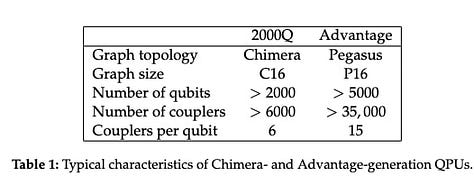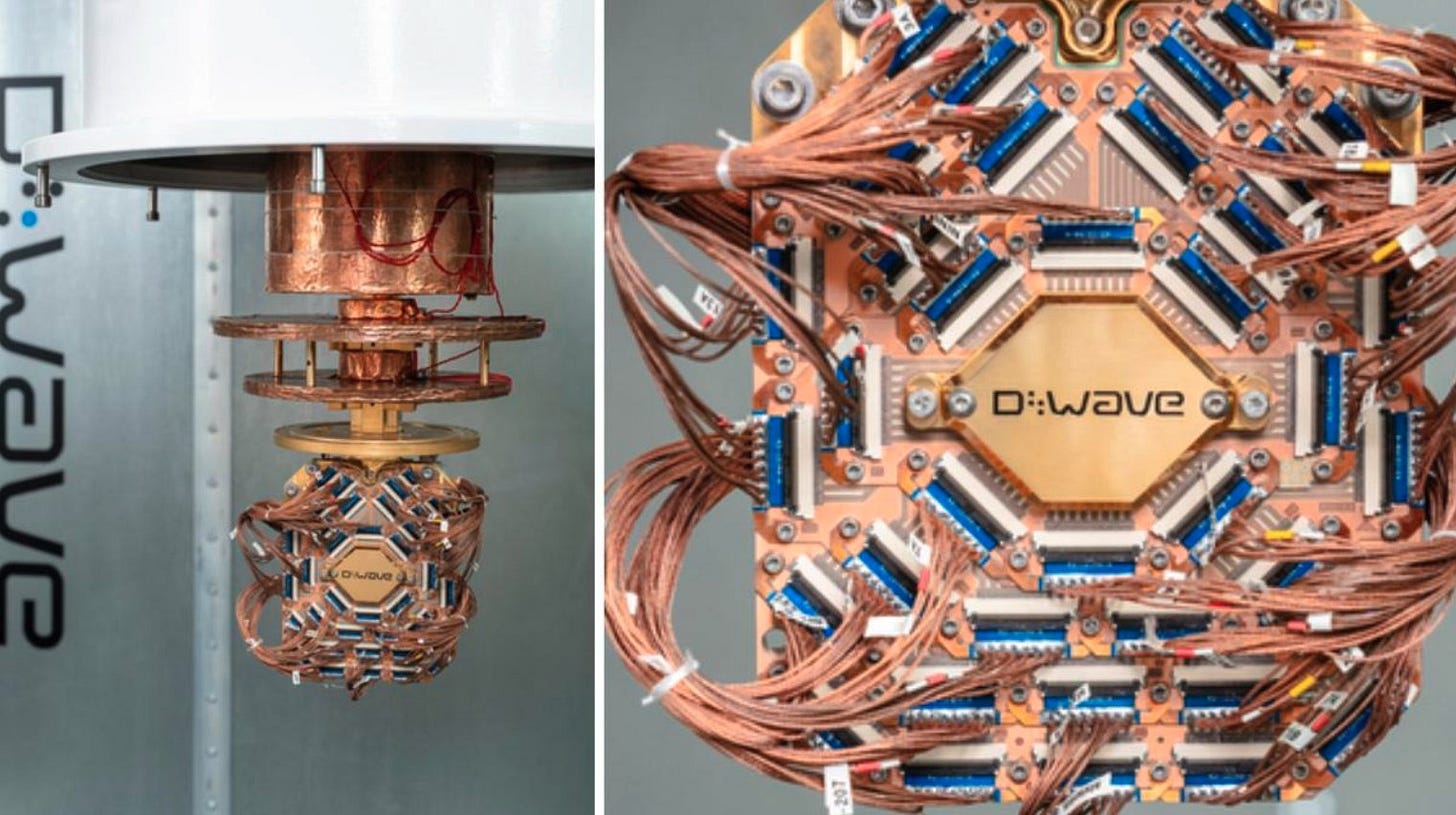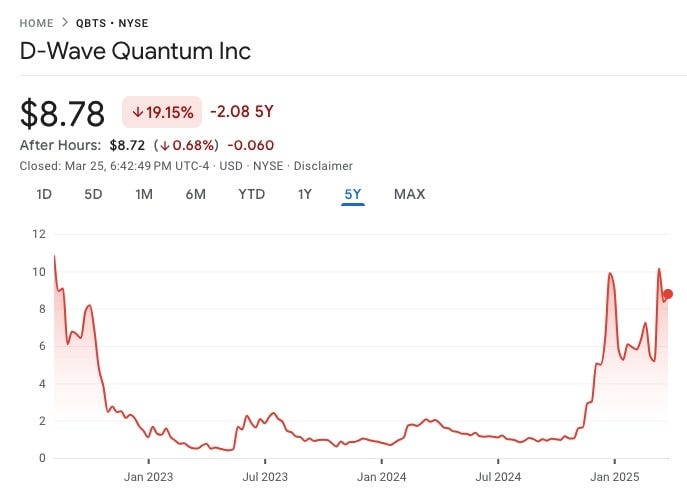DWave Quantum Annealing Beat a Regular Supercomputers on a Real Materials Simulation Problem
By Brian Wang
Two weeks ago, D-Wave System announced a scientific breakthrough using their quantum annealing computers systems. They published in the esteemed journal @ScienceMagazine
Their newest annealing quantum computer outperformed one of the world’s most powerful classical supercomputers in solving a complex magnetic materials simulation problem with relevance to materials discovery. The new landmark peer-reviewed paper, <b>Beyond-Classical Computation in Quantum Simulation</b> validates this achievement as the world’s first and only demonstration of quantum computational supremacy on a useful problem.
DWave Systems has superconducting quantum annealing systems but is now also developing the more common gate based quantum systems. Quantum annealing is more like an analog version of quantum computing.
The company is publicly traded and has reached a $2.7 billion valuation. It has been fluctuating between $1.5 billion and $3 billion in valuation. This is 6-12 times the valuation DWave was trading at for most of the past two years.
An international collaboration of scientists led by D-Wave performed simulations of quantum dynamics in programmable spin glasses—a computationally hard magnetic materials simulation problem with known applications to business and science—on both D-Wave’s Advantage2™ prototype annealing quantum computer and the Frontier supercomputer at the Department of Energy’s @ORNL
.D-Wave’s quantum computer performed a complex simulation in minutes and with a level of accuracy that would take nearly a million years using the supercomputer. In addition, it would require more than the world’s annual electricity consumption to solve this problem using the supercomputer, which is built with graphics processing unit (GPU) clusters.
For decades, scientists have aspired to build a quantum computer capable of solving complex materials simulation problems beyond the reach of classical computers. D-Wave's advancements in quantum hardware have made it possible for its annealing quantum computers to process these types of problems for the first time. Magnetic materials simulations, like those conducted in this work, use computer models to study how tiny particles not visible to the human eye react to external factors. Magnetic materials are widely used in medical imaging, electronics, superconductors, electrical networks, sensors, and motors.
Quantum annealing is uniquely designed for optimization. With the Advantage quantum system performance update, customers can solve larger and more complex problems and get higher quality answers for real-world problems faster. Our vision is to go even further. Customers expect one, single, trusted cross-platform source for both quantum annealing and gate-model access.
The Advantage™ system is the first quantum computer designed for business and research available on-premises or accessible through the D-Wave Leap™ quantum cloud service. The Advantage system is the world’s largest annealing quantum computer with more than 5,000 qubits and 15-way connectivity capable of addressing computationally complex problems today.
The Advantage system is the first and only quantum computer that enables customers to develop and run real-world, in-production quantum applications at scale in the cloud and on-premises. Using the Advantage system, customers benefit from improved performance over classical approaches for many important real-world problems. The Advantage quantum computer is 30x faster and delivers equal or better solutions 94% of the time compared to the previous generation Dwave system.
Beyond-classical computation in quantum simulation
Abstract
Quantum computers hold the promise of solving certain problems that lie beyond the reach of conventional computers. Establishing this capability, especially for impactful and meaningful problems, remains a central challenge. Here we show that superconducting quantum annealing processors can rapidly generate samples in close agreement with solutions of the Schrödinger equation. They demonstrate area-law scaling of entanglement in the model quench dynamics of two-, three- and infinite-dimensional spin glasses, supporting the observed stretched-exponential scaling of effort for matrix-product-state approaches. They show that several leading approximate methods based on tensor networks and neural networks cannot achieve the same accuracy as the quantum annealer within a reasonable timeframe. Thus quantum annealers can answer questions of practical importance that may remain out of reach for classical computation.
D-Wave now has an Advantage2 processor that is four times larger than the prototype used in this work (Journal Science paper) and has extended the simulations of this paper from hundreds of qubits to thousands of qubits, which are significantly larger than those described in this paper.



IonQ
IonQ has a $6 billion valuation. IonQ is developing a general-purpose trapped ion quantum computer and software to generate, optimize, and execute quantum circuits. IonQ’s qubits are ionized ytterbium atoms, a silvery rare-earth metal. Each ytterbium atom is perfectly identical to every other ytterbium atom in the universe.
IonQ has commercial customers working on their 24 qubit, 30 qubit and 36 qubits systems. They plan a 64 qubit system later in 2025.
Rigetti
Rigetti designs and manufactures its own quantum processing units (QPUs), builds full quantum computing systems, and hosts a developer-oriented cloud infrastructure platform for quantum computing applications. That vertically integrated approach makes it a "full stack" play on the quantum computing market. It serves big customers like the Superconducting Quantum Materials and Systems Center (SQMS), Air Force Research Lab (AFRL), and Horizon Quantum Computing in Singapore. Rigetti systems are powered by superconducting qubit-based quantum processors.
Rigetti is also publicly traded and has a valuation of about $3 billion.
They launched the Novera QPU, a 9-qubit commercial version of its quantum computer that costs about $900,000, in late 2024. It also recently deployed its first 84-qubit Ankaa-3 quantum computing system, which can detect over 99% of its errors (known as its "median gate fidelity" ratio), to support its cloud-based platform.
In 2025, Rigetti plans to launch a new modular quantum computing system that links together four 9-qubit chips to create a 36-qubit system with a median gate fidelity of 99.5%. It also aims to deploy a non-modular system with more than 100 qubits by the end of 2026, and an even more powerful 336-qubit system within the next few years.
Leaders Towards Lots of Error Corrected Qubits?
Who is in the Lead?
QuEra Computing
QuEra, a pioneer in neutral atom technology, has achieved a notable milestone in collaboration with Harvard University. In December 2023, they demonstrated 48 logical qubits using 280 physical qubit, executing large-scale algorithms on an error-corrected quantum computer. This demonstration included high-fidelity operations, such as a two-qubit transversal CNOT gate with a fidelity of 0.9993, and a circuit error rate of 0.002 with eight logical qubits—11 times better than their physical qubit error rate of 0.023. QuEra’s roadmap aims for 100 logical qubits by 2026, but their current record stands at 48 logical qubits, making it a significant achievement in the field.
Quantinuum
Keep reading with a 7-day free trial
Subscribe to next BIG future to keep reading this post and get 7 days of free access to the full post archives.





